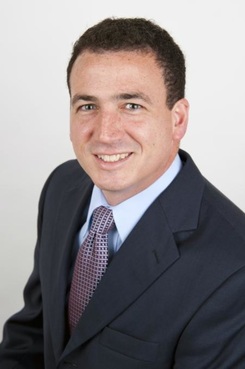Retirement and Law Firms: A Case of the Shoemaker's Children?
Many firms inadvertently neglect the long-term interests of their lawyers by failing to offer well-structured retirement plans. Even when the firm provides retirement and investment plans, many individual lawyers are unfamiliar with the options available to them for retirement savings.
February 19, 2018 at 12:08 PM
9 minute read
 Joseph N. Frabizzio of Robson & Robson
Joseph N. Frabizzio of Robson & Robson
“The shoemaker's children go barefoot.” This proverb was never truer than when applied to law firms. In its quest to service clients, many firms inadvertently neglect the long-term interests of their lawyers by failing to offer well-structured retirement plans. Even when the firm provides retirement and investment plans, many individual lawyers are unfamiliar with the options available to them for retirement savings. Yet, a comprehensive, well-structured plan can provide security and peace of mind to current employees and serve as a recruiting tool to attract and retain talent.
This article provides an overview of retirement plan options that may be available to your firm, as well as the potential advantages and disadvantages of each.
Benefits of a Retirement Plan
Retirement plans can offer tax free growth, deferral of income and the ability to make withdrawals from the plan when attorneys scale back work and are in a lower tax bracket than in their highest earning years. In exchange for these tax advantages, the plans impose penalties on withdrawals prior to the age of 59.5.
“Qualified” retirement plans are sponsored by an employer and are subject to regulation by multiple government agencies. For example, qualified plans must comply with the nondiscrimination provisions of ERISA and generally cannot favor highly compensated employees over lower-compensated employees. These plans must also meet stringent IRS requirements to maintain their tax-advantaged status.
Qualified retirement plans fall into one or two categories: defined benefit plans and defined contribution plans. Defined benefit plans require that the employer make sufficient contributions to a plan that will allow it to pay retired employees a determinable benefit starting at retirement. Defined contribution plans permit employees and employers to make a pre-set contribution to the plan each year, but do not guarantee the amount available to be paid out at retirement.
Defined benefit plans place the risk of investment underperformance on the employer, while defined contribution plans place this risk on the employee. While defined benefit plans were a popular option 30 years ago, they now represent only a small percentage of qualified plans and, when offered, are often used in conjunction with a defined contribution plan. This overview focuses on defined contribution plans.
Types of Defined Contribution Plans
Perhaps one of the most widely known varieties of defined contribution plans is a 401(k) plan. These types of plans are available to a variety of employers, including partnerships, corporations and sole proprietorships. At minimum, eligible employees are those who are at least 21 years of age and, generally, have at least one year of service. An employer can also choose to offer a matching contribution, which is established as a percentage of an employee's compensation and deductible by the employer. Subject to the rules of the employer's 401(k), participating employees may also take loans against their 401(k) plan assets.
To establish a 401(k) plan, an employer ordinarily works with an institution or professional who assists with drafting and adopting a written plan, arranges for a trust fund to hold the plan's assets, implements a record-keeping system and provides information to participants. The cost of setting up a 401(k) plan is reasonable and can be appropriate for law firms with more than a few employees. Administrative costs for a 401(k) plan are generally higher than for a SIMPLE IRA or SEP, which are discussed below.
Employees make contributions to a 401(k) plan by deferring compensation they would otherwise receive. The employee's deferred income is set aside for that employee and separately tracked for each employee. If an employee is 50 years or older, the employee may make what is known as a “catch-up” contribution of up to an additional $6,000 per year over the usual $18,500 employee contribution limit for younger employees. Employee contribution limits are subject to IRS regulation, restrictions imposed by the plan itself and limits imposed by other retirement plans in which the employee may participate.
There are also limits on the total amount that can be contributed between an employer and employee. For example, an employee who makes contributions to a 401(k) plan, receives matching contributions from the employer and also participates in a profit sharing plan is limited to a total retirement plan contribution of the lesser of the employee's total compensation or $55,000. An employer who is 50 years of older, however, may be able to use the $6,000 catch-up contribution to increase the limit to $61,000.
There are also “simpler” versions of 401(k) plans that may be appropriate. If you are a true solo practitioner with no employees, a solo 401(k) is an option. These solo plans significantly simplify the documentation requirements and administrative costs associated with an ordinary 401(k). Many institutions offer such plans. The disadvantage is that you cannot use such a plan if you have any employees. There is also a version of a 401(k) known as a “SIMPLE 401(k)” available for employers with less than 100 employees, but these plans mandate at least a 2-percent eligible employee contribution and a matching 3-percent contribution from employers. An employer using a SIMPLE 401(k) cannot offer any other retirement plans.
Profit Sharing Plans (PSP)
A PSP can stand alone or work in conjunction with a 401(k) plan. Despite the name, a PSP does not make distributions merely on the basis of profits. While a 401(k) plan allows for elective deferrals by the employee and a potential employer match, PSPs provides the employer with the discretion to contribute up to 25 percent of eligible employee compensation, subject to certain limitations. This contribution rate may change annually, but must be applied via a formula to all eligible employees. Unlike standalone 401(k) plans, in which employee deferral amounts vest immediately, PSPs may impose a vesting schedule for employer contributions. The amounts contributed by the employer under a PSP are also limited by the $55,000 annual cap. Administrative and set-up costs are likely similar to a 401(k) plan.
Simplified Employee Pension (SEP)
If you are the owner or employee of a smaller firm, SEPs can be a good option. Unlike the 401(k) plan, however, there is no deferral of compensation involved. Only employers, including sole proprietors, may establish and contribute to a SEP. The employer may contribute up to 25 percent of an employee's salary up to a maximum of $55,000 to a SEP. The employer can decide to skip a year of contribution or change the contribution rate from year-to-year, so long as it is applied to all eligible employees. Unlike most other plans identified in this article, a SEP can be established up to the employer's tax filing deadline for the prior tax year rather than the end of the applicable tax year.
Although less restrictive tests may be established, employees who are at least 21 years of age, earn at least $600 in compensation and have performed services for the employer during at least three of the previous five years meet the eligibility requirements of a SEP. As a procedural matter, the employer generally establishes an individual retirement account (IRA) on behalf of each eligible employee, chooses an institution to act as trustee or custodian and then make contributions to the IRAs.
The approval process for satisfying IRS requirements is streamlined as compared to a 401(k) plan. The most significant downside of a SEP is the requirement to treat all employees equally with regard to contributions. If the owner has one employee and desires to contribute 20 percent to the owner's own IRA, the owner must make the same percentage contribution to all other eligible employees' IRAs. If the owner is considered self-employed, a conversion needs to be made to account for self-employment taxes and ensure that the owner does not obtain a greater tax benefit than employees. This will reduce the permitted percentage contribution for the owner's own SEP.
Unlike profit sharing plans, all employer contributions must immediately become fully vested and are not subject to forfeit. If the employer maintains a PSP in addition to a SEP, the deductibility of the profit sharing plan contributions will be reduced by the deduction for SEP contributions. An employee may not take a loan from a SEP.
SIMPLE IRA
If you are an employer with fewer than 100 employees or are self-employed, a SIMPLE IRA is also an option. Unlike a SEP, both the employer and employees may make contributions. An employee may defer up to $12,500 of compensation per year, with those age 50 years and older are able to contribute an additional $3,000 per year. While less restrictive requirements may be used, employees who have earned at least $5,000 during any two years prior to the current calendar year and expect to earn at least $5,000 in the current calendar year are eligible to participate.
Employers are required to contribute to the SIMPLE IRA. There are two options. One option is to make a fixed contribution of 2 percent of compensation to all eligible employees, even if an employee does not elect to defer any of his or her compensation to the SIMPLE IRA. The other option is to match employee contribution dollar-for-dollar, up to 3 percent.
While the penalty for early withdrawal of funds from the other retirements plans in this article is 10 percent, that 10-pecent penalty is increased to 25 percent if a withdrawal from a SIMPLE IRA occurs within the first two years in which the employee participates in the plan. Unlike a 401(k), an employee may not take a loan from a SIMPLE IRA.
The High Cost of Inaction
No matter what option is selected, there is a substantial benefit to participating in savings and investment plans early and consistently. The sooner an individual participates in the plan, the longer the period of wealth accumulation. While even contributors with shorter time horizons can reap benefits from the right plan, allowing time for compounding and tax deferral allows participants to make the most of their contributions. Choosing the right plan is the first step toward a more secure future for your firm and your attorneys.
Joseph N. Frabizzio is of counsel at Robson & Robson where he focuses his practice on tax planning and controversy. He holds an LL.M. in taxation and helps clients minimize their federal and state tax obligations associated with business transactions. He also assists clients with complex trusts and estates issues and succession planning. Frabizzio can be reached at 610-825-3009 or [email protected].
This content has been archived. It is available through our partners, LexisNexis® and Bloomberg Law.
To view this content, please continue to their sites.
Not a Lexis Subscriber?
Subscribe Now
Not a Bloomberg Law Subscriber?
Subscribe Now
NOT FOR REPRINT
© 2025 ALM Global, LLC, All Rights Reserved. Request academic re-use from www.copyright.com. All other uses, submit a request to [email protected]. For more information visit Asset & Logo Licensing.
You Might Like
View All

Legal Departments Dinged for Acquiescing to Rate Hikes That 'Defy Gravity'
4 minute read
Law Firms Are In a Strong Spot, But Their Continued 'Growth Mindset' Comes With Challenges
5 minute readTrending Stories
- 1We the People?
- 2New York-Based Skadden Team Joins White & Case Group in Mexico City for Citigroup Demerger
- 3No Two Wildfires Alike: Lawyers Take Different Legal Strategies in California
- 4Poop-Themed Dog Toy OK as Parody, but Still Tarnished Jack Daniel’s Brand, Court Says
- 5Meet the New President of NY's Association of Trial Court Jurists
Who Got The Work
J. Brugh Lower of Gibbons has entered an appearance for industrial equipment supplier Devco Corporation in a pending trademark infringement lawsuit. The suit, accusing the defendant of selling knock-off Graco products, was filed Dec. 18 in New Jersey District Court by Rivkin Radler on behalf of Graco Inc. and Graco Minnesota. The case, assigned to U.S. District Judge Zahid N. Quraishi, is 3:24-cv-11294, Graco Inc. et al v. Devco Corporation.
Who Got The Work
Rebecca Maller-Stein and Kent A. Yalowitz of Arnold & Porter Kaye Scholer have entered their appearances for Hanaco Venture Capital and its executives, Lior Prosor and David Frankel, in a pending securities lawsuit. The action, filed on Dec. 24 in New York Southern District Court by Zell, Aron & Co. on behalf of Goldeneye Advisors, accuses the defendants of negligently and fraudulently managing the plaintiff's $1 million investment. The case, assigned to U.S. District Judge Vernon S. Broderick, is 1:24-cv-09918, Goldeneye Advisors, LLC v. Hanaco Venture Capital, Ltd. et al.
Who Got The Work
Attorneys from A&O Shearman has stepped in as defense counsel for Toronto-Dominion Bank and other defendants in a pending securities class action. The suit, filed Dec. 11 in New York Southern District Court by Bleichmar Fonti & Auld, accuses the defendants of concealing the bank's 'pervasive' deficiencies in regards to its compliance with the Bank Secrecy Act and the quality of its anti-money laundering controls. The case, assigned to U.S. District Judge Arun Subramanian, is 1:24-cv-09445, Gonzalez v. The Toronto-Dominion Bank et al.
Who Got The Work
Crown Castle International, a Pennsylvania company providing shared communications infrastructure, has turned to Luke D. Wolf of Gordon Rees Scully Mansukhani to fend off a pending breach-of-contract lawsuit. The court action, filed Nov. 25 in Michigan Eastern District Court by Hooper Hathaway PC on behalf of The Town Residences LLC, accuses Crown Castle of failing to transfer approximately $30,000 in utility payments from T-Mobile in breach of a roof-top lease and assignment agreement. The case, assigned to U.S. District Judge Susan K. Declercq, is 2:24-cv-13131, The Town Residences LLC v. T-Mobile US, Inc. et al.
Who Got The Work
Wilfred P. Coronato and Daniel M. Schwartz of McCarter & English have stepped in as defense counsel to Electrolux Home Products Inc. in a pending product liability lawsuit. The court action, filed Nov. 26 in New York Eastern District Court by Poulos Lopiccolo PC and Nagel Rice LLP on behalf of David Stern, alleges that the defendant's refrigerators’ drawers and shelving repeatedly break and fall apart within months after purchase. The case, assigned to U.S. District Judge Joan M. Azrack, is 2:24-cv-08204, Stern v. Electrolux Home Products, Inc.
Featured Firms
Law Offices of Gary Martin Hays & Associates, P.C.
(470) 294-1674
Law Offices of Mark E. Salomone
(857) 444-6468
Smith & Hassler
(713) 739-1250






